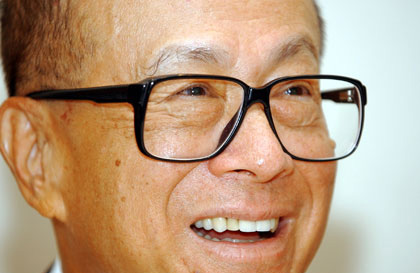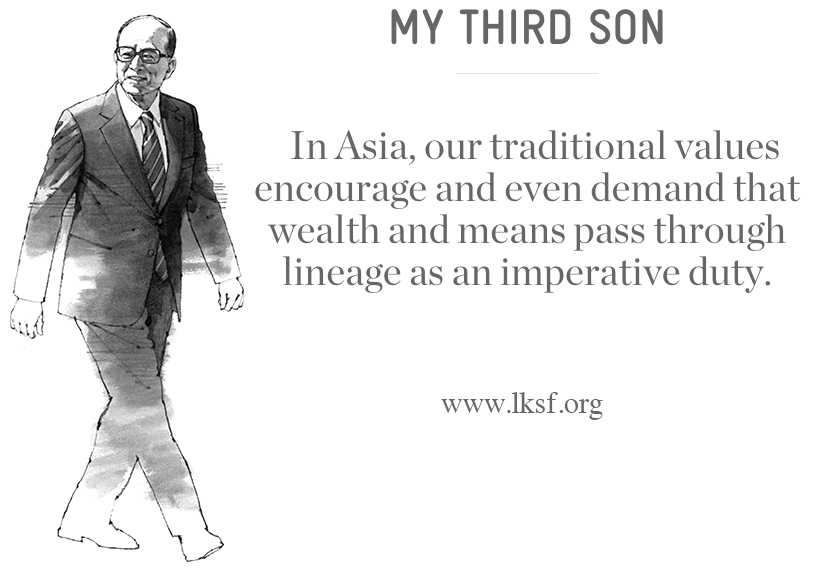



Li Ka Shing is known by many superlatives: the richest man in Asia (Forbes estimates assets of $31 billion), “superman” (for his business acumen), even (such is his celebrity) the only businessman to have a wax statue at Madame Tussauds in Hong Kong. But these days it is as a philanthropist that he truly stands out. Not only is Li, age 86, a leading donor (at least $1.65 billion from his foundation, to date, and more from his other sources), he is the outspoken exemplar of the kind of socially progressive giving which, although increasingly popular in the U.S., is rare in China, where wealth is traditionally kept within families and donors favor a low profile.
In fact, when he established his foundation in 1980, one of the three objectives he defined was to “nurture a culture of giving.” His two other goals are education reform and advances in medical research and services, and he’s made major contributions in both of those areas in Hong Kong (where he lives), China, the U.S., Singapore, and India, among other countries. In 1981 he founded Shantou University in Southeast China, with the intent of establishing it as a showplace for both higher educational reform and the life sciences, partly through a network of international partnerships and exchanges with some 20 colleges abroad. In the U.S., Stanford University’s medical school opened the Li Ka Shing Center for Learning and Knowledge in 2010, and in 2012 the University of California, Berkeley, opened the Li Ka Shing Center for Biomedical and Health Sciences. Closer to home, Li has sought to inspire a culture of giving through a campaign called “Love HK Your Way!” which encourages grass-roots projects designed to bring people together and improve the community.
As his website attests, Li’s dedication to philanthropy is the result of a difficult youth. In an unusually soulful note, the site declares that “trials, hardship, and a sense of loneliness accompanied him on his journey from a small coastal village in China to the flourishing enterprise he oversees today.” Born near Shantou in mainland China, Li fled to Hong Kong with his family during the Japanese occupation, then was forced to leave school at the age of 15 for a job in a plastics factory after his father died of tuberculosis. As bootstrap stories go, Li’s is unparalleled: He became the factory’s general manager by the age of 19, and by the age of 22 had started his own plastic manufacturing business. His empire today, under the umbrella of the Cheung Kong Group and Hutchison Whampoa, includes immense holdings in real estate, shipping, telecommunications and biotechnology, and makes up 15 percent of the market capitalization of the Hong Kong Stock Exchange.
Li, whose two sons manage his businesses, has described his foundation as his “third son” and has pledged to donate one-third of his assets to support philanthropic projects. “To be able to contribute to society and to help those in need to build a better life, that is the ultimate meaning in life,” he has said. “I would gladly consider this to be my life’s work.”
